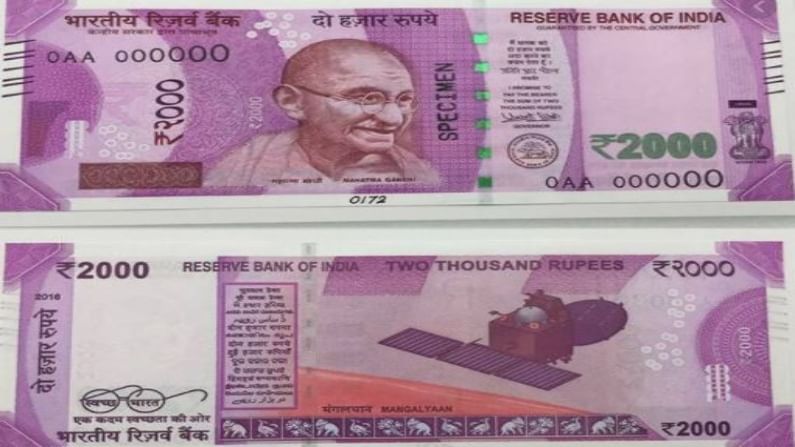Can printing money save the Covid-hit economy ?
There seems to be a divided opinion among economists and policymakers
- Sakshi Batra
- Last Updated : June 5, 2021, 14:58 IST

Major global economies are adopting unorthodox stimulus measures, including printing money to ease the pain of citizens battling the impact of the Covid-led disruptions. The US, the European Central Bank, Japan, and even emerging economies such as Turkey and Indonesia are printing money to bring economies back to life.
There is now a constant buzz on whether India should also adopt doing so. But how does printing money work and can printing money help save our pandemic hit economy ?
What prompted this move?
Governments turn to printing money to increase liquidity in the economy. Printing money can ensure that the money reaches the masses which can then lead to higher spending. This provides an opportunity for the government to boost overall demand at the time when private demand has fallen — like it has today. In economic terms, it is called monetising the fiscal deficit. In simple terms, In simple terms, monetising fiscal deficit means the RBI purchases government debt directly rather than the government borrowing from the markets by selling bonds. In turn, the central bank prints more currency to finance this debt.
This enables the government to have the cash to spend and alleviate the stress in the economy — via direct benefit transfers to the poor or starting construction of a hospital or providing wage subsidy to workers of small and medium enterprises etc.
Has India ever done it in the past?
Historically, India’s deficits were automatically monetised until 1997. However, direct monetisation of government deficit has its downsides like higher inflation which is major concern. Experts say that printing more money doesn’t increase economic output – it only increases the amount of cash circulating in the economy. If more money is printed, consumers are able to demand more goods. But if firms have still the same amount of goods, they will respond by putting up the prices. In 1994, Manmohan Singh (then Finance Minister), decided to end this facility by 1997. Former RBI Governor D Subbarao had also cautioned against it saying , “since inflation is revealed with a lag, it is often too late before governments realise they have over-borrowed. Higher inflation and higher government debt provide grounds for macroeconomic instability.”
What does the FRBM Act say?
The FRBM Act was enacted during the tenure of the Atal Bihari Vajpayee government as the final step towards phasing out monetisation of debt. The Act barred the RBI from participating in primary issuances of government securities from 1 April 2006. However, the Act provided an escape clause and said the RBI could subscribe to the primary issue of central government securities in case the government exceeds the fiscal deficit target on “grounds of national security, act of war, national calamity, collapse of agriculture severely affecting farm output and incomes, structural reforms in the economy with unanticipated fiscal implications, decline in real output growth of a quarter by at least three per cent points below its average of the previous four quarters”
Finance Minister Nirmala Sitharaman had invoked this escape clause much before the Covid-19 pandemic in February 2020 Budget speech, however, the RBI did not have any plans to monetise deficit.
What should govt do to ensure economic recovery?
There seems to be a divided opinion among economists and policymakers.
While Nobel Laureate Abhijit Banerjee has has said that India must absolutely do it. In fact he believes India should have had done it in the first wave to prevent the second wave pain.
He told Sunday Times, “We need resources to support the poor as well as to deal with a bunch of potential defaults on loans–the latter was avoided in the first wave by some government credit guarantees. Plus we need th e resources to buy enough vaccines.”
India’s leading banker Uday Kotak has also vouched for the same. He has shared insights in media saying the country needs to print cash in order to support the economy that has taken a substantial beating due to the second wave of coronavirus. He has been quoted as saying, “This is the time to expand the balance sheet of the government, duly supported by the RBI… for monetary expansion or printing of money. Time has come for us to be doing some of that… If not now, when?”
However, Reserve Bank of India (RBI) Governor Shaktikanta Das said there was no plan to print more currency notes.
“Central bank with regard to printing of notes has its own models and assessment. The RBI takes a decision based on so many complex factors which relate to financial stability, inflation level, stability of the exchange rates,” he said.
Download Money9 App for the latest updates on Personal Finance.
Related
- Top 25 Best Selling Cars in the US Q1 2025 Ford Leads Tesla Holds, and Sedans Make a Comeback
- Vegan vs Non-Vegetarian: Which Diet Is More Nutritious and Better for Your Health?
- होंडा ने हेडलाइट समस्या को ठीक करने के लिए वापस मंगवाई CB300R मोटरसाइकिलें
- RBI ने लगातार दूसरी बार रेपो दर में कटौती की, कर्ज होंगे सस्ते
- Tata Motors की वैश्विक थोक बिक्री चौथी तिमाही में 3% घटकर 366177 इकाई
- सुरक्षा मानदंडों को पूरा करने की बढ़ती लागत की वजह से दाम बढ़ा रही हैं कार कंपनियां

